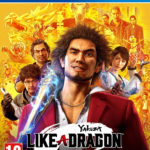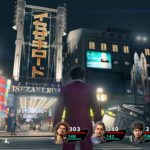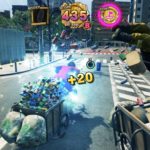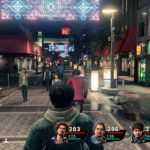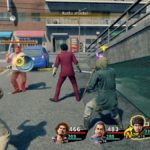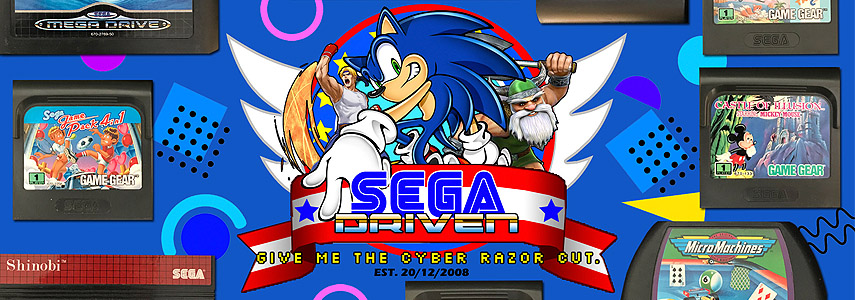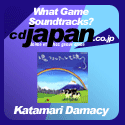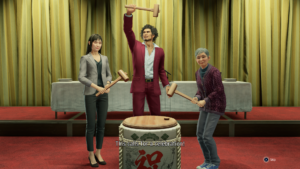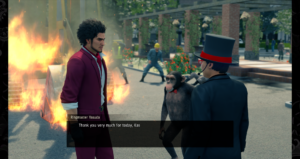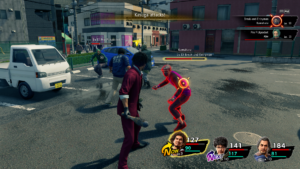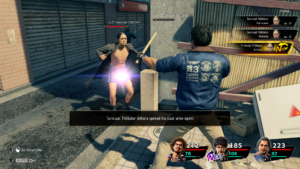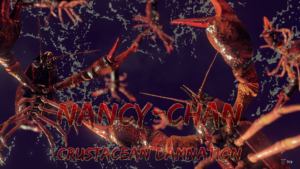Yakuza: Like a Dragon – PC and PS4 Review
PC Version Review
Yakuza: Like a Dragon’s shift in genre came as a shock to many, myself included. The brutal beat-em up gameplay, that takes after SEGA’s earlier SpikeOut, felt like such a defining trait of the series. Removing that seemed akin to removing the platforming from Sonic, or the puzzle gameplay of Puyo – the territory of spin-offs, but here we were with the next mainline Yakuza game, known outright as Yakuza 7 in Japan, and it’s a turn-based RPG. I was uneasy, given my own troubled relationship with RPGs, but the game’s finally here in the West, and we can finally see how that big change panned out.
The answer? Pretty well – for the most part. Yakuza: Like a Dragon is probably the most like a journey a Yakuza game has felt since Yakuza 0, and on the same note it felt like I was rediscovering the series for the first time all over again. But it fails to escape the trappings of the games it lavishly pays tribute to, and suffers from a lack of the refinement that previous games in the series had meticulously built towards.
Right off the bat, it’s well established that we’re in uncharted waters here; as well as the gameplay change, Like a Dragon also introduces a brand-new protagonist to the series, Ichiban Kasuga. Kazuma Kiryu’s story is over, and Ichiban immediately makes an impression all his own. For a Yakuza grunt, he’s kind and naive; you could say these things of Kiryu, but with him those traits came about more from the situations he was placed in. Ichiban is borderline dumb with how he attempts to befriend anyone and everyone, in a hammy, over-the-top manner, but he doesn’t cross the border into being annoying with it. Instead, he’s endearing, and someone you’re always rooting for. Whereas Kiryu’s introduction in Yakuza 0 shows him beating the hell out of someone for repayment, Ichiban fights someone for repayment, and then takes their empty wallet, letting them keep their money; because he’s sympathetic to their circumstances. Whoever was next in the Yakuza protagonist seat had big shoes to fill, but Ichiban stuck the landing.
The supporting cast are also, I’d say, stronger than ever. This somewhat comes about because of the RPG gameplay, seeing as now you have an entire party at your command rather than just one character. As a result you’ll be spending plenty of time getting to know your party; what they like, their history, and that one time they got caught staying up late playing their Dreamcast. This is taken even further by the new “Drink Links”, riffing somewhat on Persona’s Social Link system – they offer a real window into each character’s motivations, interests, goals, and personalities. The core party of Ichiban, Adachi, Nanba and Saeko bounce off each other wonderfully, and the later characters introduced are solid too. That said, I did feel like the final person to join Ichiban’s quest didn’t feel as well-developed as the rest of the party, perhaps as a consequence of how late into the game he joins.
On the whole, I was engaged by Like a Dragon’s story. As with any Yakuza game, the story kept me fighting my way through, as I desperately wanted to see what twist was around every turn, what characters I’d meet, and what surprises might show up next. And of course, just how much more they could make me hate the villains. Once again, this is a Yakuza game with villains you’ll hate, making it all the more satisfying when you knock their lights out. It does however, have somewhat of an addiction to that ‘twist’ factor – to the point some major reveals had me literally saying out loud, “oh come on!”. I love a good narrative rollercoaster, but some elements here felt like they tried a bit too hard. There perhaps could’ve been some attempt to explain the story more efficiently, too. Like a Dragon has maybe the slowest start in any of the Yakuza games I’ve played, and across the whole game the quantity and length of cutscenes caught me by surprise. There’s one chapter where you have about three or four cutscenes in a row, with save opportunities in between each one, because in total they amount to about 40 minutes to an hour of watching exposition be literally told to the protagonists. Interesting exposition, sure, and the game does a fantastic job getting you invested in the conflicts roaring throughout Yokohama, but all the same I found myself thinking “it’s still going?”
I also found myself with the same bemused reaction in response to some of the fanservice. I was undoubtedly grinning from ear to ear at some of the surprises in store for longtime fans, but at times it too can feel a bit forced. At one point a longtime character shows up for all of 10 seconds, and it felt jarring given they never show up again; like they just did it for the sake of saying “hey, look, remember them?” Yes, we do, but this is supposed to be a fresh start, isn’t it? Another returning character almost approached being badly written in my eyes, with their personality seemingly out-of-place compared to what I knew of them from prior games.
There’s more than just the new character roster to set this aside from Yakuza games past, of course – namely, the brand new setting. Rather than the condensed streets of Kamurocho and Sotenbori, you’ll now be in the expansive Ijincho district of Yokohama. It was nice to have somewhere new to explore, and Ijincho is pretty gorgeous – generally speaking, Like a Dragon’s production values take the series to new heights, as the voicework (including a very solid English dub, for the first time in 15 years or so), animation, music and optimisation on PC all make for a superb presentation. If you want the game to run as smooth as possible, I suggest you opt for a custom PC that meets the recommended system requirements.
I did enjoy running around Ijincho more than Okinawa from Yakuza 3, but it also falls into the trap a lot of free-roaming games have done in recent years – it’s too big. Particularly early on in the game, your access to fast travel is extremely limited – you can only fast travel to taxi locations where you’ve already physically gone up to and spoken with the taxi driver, and so you’ll be doing a lot of running around. Thankfully the limited stamina of earlier titles isn’t here, and you only have to tap the run button rather than holding it, but Ichiban isn’t exactly Sonic the Hedgehog. This can make what’s already a sluggish start feel like outright molasses. Fortunately, there’s still just as much to do in Yokohama, with batting centres, SEGA arcade games and karaoke returning just to name a few. But I feel like the map could’ve been condensed somewhat without losing these features. There’s also plenty of attractions new to Yakuza, such as Dragon Kart; a kart racer for those who’d rather fire actual missile launchers at their opponents, rather than red shells. It doesn’t feel quite as polished as a dedicated racing game, but as an aside it’s still fairly fun. The business management simulator of Yakuza 0 also makes an overhauled comeback, and I’d say at least clearing the first milestone in this minigame is almost necessary, or at least very worthwhile given the rewards. The game does a fairly poor job explaining it unfortunately, but once it clicks it can actually be a fun way to pass the time in its own right.
Also somewhat new is Part-Time Hero, something I feel should’ve been a more overt Rent-a-Hero nod. The idea here is to reward you for doing certain tasks, such as defeating a certain number of specific enemies, finding a specific NPC, or fighting off a tailored group of enemies for someone. It’s a solid idea on paper, and gives the map’s specific areas more purpose, as certain enemies will only appear in certain parts of the map. But in practice, it’s not especially helpful outside of the SOS Missions. Rather than just having all of the “defeat certain enemies” missions unlocked from the go, you have to specifically take out the sets of enemies you’re given before the next requests unlock, and they don’t apply retroactively. So even if I took down 200 baseball fans, it wouldn’t matter if I hadn’t also taken care of 10 Fashion Gurus beforehand. Whilst they spawn in specific areas, whether the ones you’re after specifically will or not is a crapshoot. This also extends somewhat to the ‘Rescue’ Missions – I only ever did these ones by complete accident, when I spoke to an NPC outside say, a cafe I was trying to enter, and it turned out they were a missing person. I think had all the requests just been unlocked from the start, like a giant scavenger hunt, it would’ve been a lot more natural and fun to complete these requests. As it was, it just felt like a tedious checklist to fumble my way through.
The SOS Missions are somewhat of an exception. They still operate on the logic of “do this mission to unlock another,” but as they’re all specifically designed battles, it feels less arbitrary to run around doing them one after the other, compared to just farming the same set of generic grunts in a specific area over and over. In addition, the rewards become a lot more significant. After a while, I unlocked an SOS Mission that outright rewarded me with 5 entire levels of EXP, which proved extremely valuable for the section of the game I was currently at.
I suppose this brings us to the elephant in the room – battles. While it’s commonly cited that Yakuza took after Shenmue, it’s typically been an evolution of SpikeOut; a SEGA Model 3 brawler that was notable for a giant Sonic cameo and not much else. Yakuza took the basic gameplay that game introduced and improved it significantly for the home market, and now… it’s gone. Turn-based RPGs are the order of the day here, and you can breathe a sigh of relief, because it works. Mostly.
The basic system works like any RPG in this format, in that you pick the attack or Skill (which cost MP, ‘Mental Points’) that you want to use, and sit back as your opponent goes to do it. Fortunately if this sounds dry to you, Like a Dragon gives the turn-based genre a Yakuza-style shot in the arm, as there’s far more to consider than just picking moves. Will an attack reach an enemy? Are there items in the way that you could pick up to do additional damage? Will another enemy intercept your path to the one you’re trying to hit, and stop your attack? Will that crowd-control move actually hit anyone else with your current positioning? What about elemental weaknesses? Will an attack “ground” an enemy for a follow-up, automatic or manual? Can you time specific skills, Mario & Luigi RPG-style, to do a hefty amount of extra damage; and then time your own defence to negate the opponent’s attacks? Now there’s even an entire job system to completely change your moveset and the kind of equipment you’ll need, and each one gives you permanent skills at certain levels, meaning your party can become extremely versatile. There’s a lot more to consider here than usual, and it keeps the battles exciting and blood pumping, despite what is technically an inherently slower take on the formula.
But the catch is that it falls short in refinement. You could grab an item to smack an enemy around with, but unlike previous games there’s no item grab button; you just have to hope Ichiban will grab the item and swing it around, instead of just kicking it out of the way and permanently destroying it. The amount of times I actually successfully grabbed an item I wanted to pick up across my entire playthrough felt like it was in the single figures, which is especially annoying as when you luck out and do grab an item successfully, it feels amazing. Even the most mundane items feel extraordinarily meaty and explosive when making contact with enemies’ faces. This extends to the regular moves too, but to a lesser extent. The concept of positioning for maximum payoff also feels ill-thought out, namely because literally positioning your characters intentionally is impossible, with it being basically random where you end up. This can make lining up attacks feel tedious at points, though fortunately skills are seemingly immune to being interrupted by other enemies in the way. The timed moves are great on paper, and as someone who hits buttons as attacks happen in RPGs that don’t even have timed hits, I was very happy to see them here. But the timing for Skills can feel inconsistent at best, and the UI does a poor job indicating what the right timing actually is.
Even enemy weaknesses are fumbled. At the time of this review, a Persona 5 style “WEAK” indicator that appears over enemies susceptible to a selected skill just… doesn’t show up. That’s despite the fact it does show up in the Japanese version of the game. Given it’s such a core component of the battle system, it’s fairly baffling that something like this was missed, and means you have to memorise the elemental weaknesses from the Sujidex (an obvious riff on the Pokedex). To be fair though, this is more effort than it’s worth anyway, as for the most part you’ll be able to smack down enemies regardless of what moves you’re using.
But that’s not necessarily a good thing. It’s more representative of Like a Dragon’s seriously confusing balancing, a matter of individual enemy strength and moreover, difficulty spikes. An enemy’s level never really feels like it tells you anything about how difficult they’ll be, as it would in most other games of this style. I got steamrolled by a boss who was level 26, then ran into a regular enemy who was level 29 and steamrolled them; both while I was around level 24. Perhaps the biggest issue is the sheer amount of health some enemies have, arguably just to create the illusion of difficulty. At one point you fight a boss who never really attacks of his own accord, as he’ll only strike back when you do. An interesting gimmick, but as a result you’re free to constantly heal your party members as much as you like, without causing him to attack. So there’s no real threat of death there, it just feels like a struggle because the boss took me about 20 minutes of doing the same moves and skills over and over until he finally dropped. And using moves that he was weak to didn’t feel like it made a meaningful difference either.
Even summons, done through literally calling someone on Ichiban’s phone, don’t alleviate this much. They may have extremely flashy, often comically violent and hard-hitting cutscenes, but they barely ever did much more damage than one of my regular skills. In fact often, they did less. The same goes for battle items such as grenades; you’d think lobbing an explosive at someone would do a bit more than scratch them, but this game disagrees.
So we have a bit of a paradox in which Yakuza Like a Dragon sounds easy on paper, and for the general goons you can pretty much wing your way through it. But the bosses form some very rough difficulty spikes, particularly by the Chapter 12 mark. I’m fine with the game getting more challenging, but the difficulty progression and balancing in the game feels all over the damn place, and by the time the final boss rolls around, they’re just throwing instant kill moves at you; which you can mitigate, but how’s a first-time player going to predict that? I spent 20 minutes whittling another boss down, only for him to one-shot Ichiban, which is an instant game-over. And the game has an archaic means of punishment, supposedly to continue its constant riffing on Dragon Quest. To retry a battle, it’s half of the money on your person. This encourages the strategic use of ATMs for sure, and given the Summons cost money to use rather than MP it’s an interesting risk-reward system, but at the same time a flat 50% cut out of your funds feels bizarrely punishing.
The main issue with this system is that sometimes, the amount of progress lost is absurd. I lost to a particularly difficult boss fight later in the game, which you reach after running through about 6 other fights and scaling a building, taking about half an hour in total. I hit retry and I was back to the very start of said building, and had to re-do all those fights again, all because there was no save point before the boss fight. It feels geared specifically to wasting your time, and for smaller fights it’s usually better to just reload a save (which I made frequently) than take the 50% funds cut.
This all may sound pretty naff, but fortunately Like a Dragon does have a few small things that I’d call “anti-frustration features”; for example, if you manage to level up your characters after a fight, their health and MP will be totally refilled, without you needing to chug another Toughness Z or what have you. And really, a lot of the major frustration with the over-the-top punishment stems from the aforementioned boss difficulty spikes; it was very rare that I’d lose to the random characters you find roaming the streets of Yokohama. But on the whole, it just all feels so randomly balanced, and that’s probably the biggest problem with it. Fortunately these are all things I could easily see fixed with a sequel (or in the weakness indicator’s case, a patch), so I’m not immediately rushing to demand a return to the beat-em up formula just yet, and as far as experiments go, this could’ve gone a hell of a lot worse.
On the whole, Like a Dragon is certainly a bold, new step for the series, and one I’m interested in seeing be carried further. It felt very much like I was rediscovering the series again for the first time, like I was on Ichiban’s massive journey. It’s immersive, bursting at the seams with personality, and often works, but when the cracks show, they show, and the experience can feel like it’s being brought to a screeching halt. Fans of RPGs should grab Like a Dragon as soon as they possibly can, and I’d really recommend everyone give it a fair shot; just prepare for some archaic design here and there. If you’re planning on getting a PC to play this game, you can check out the best gaming PC builds for any budget at 25pc.
7/10
Written by Liam “Tracker” Ashcroft 24/11/2020
A copy of the PC game was provided by the publisher for review
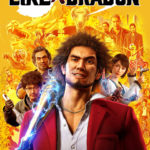
For a franchise that is predominantly about bad men punching other bad men in dynamic 3 dimensional fights that often involve ridiculous special moves and weapons, shifting things to a turn-based RPG format could have been a move that potentially killed one of the main appeals of the Yakuza franchise. Thankfully, Yakuza: Like a Dragon largely succeeds in keeping its combat snappy, fast and over-the-top, even if you are predominantly just selecting actions from a menu. It’s definitely not quite as good as the insane brawling action of its predecessors, but for a first try, Yakuza: Like a Dragon does a damn fine job of still feeling like a Yakuza game, even if the combat doesn’t surprise as frequently as past entries. Its main issues are one of repetition. Once you’ve seen a special move or summon play out for the first time, you’ll often find yourself skipping the animations the next time you see them. Weapons strewn around the area rarely come into play as much as previous games, with your team mainly using the weapons they’ve been equipped with, which often leads to you seeing more of the same actions over and over.
The new cast also slot into the Yakuza universe really comfortably and you quickly feel like they’ve been a part of the franchise forever. Ichiban Kasuga might not have the steely-faced emotionlessness of Kazuma Kiryu (meaning that he can’t surprise you as often as Kiryu can, what with Ichiban being largely more comedic and ill-informed), but he’s still a charming and lovable nerd that sees the positives in everything. It’s his own obsession with Dragon Quest that gives the game its combat system which is a nice little addition that makes the turn-based combat feel more relevant to Ichiban.
The shift to a larger game world is also a welcome one. Yokohama still feels as dense and exciting as any previous Yakuza location and the larger spaces often mean that they accommodate the fights better. Fights often feature more enemies than previous Yakuza games and they like to break off and focus on your individual team members. Some of the path-finding is a little odd, with characters having trouble navigating certain objects, but it normally sorts itself out without much issue. Some have found that the larger game world often makes traversal more of a chore than in previous entries, but I often felt it lent itself well to the new RPG focus as it means you often find yourself getting into more scraps and it’s a good opportunity to grind for more experience or look into some side quests.
Side quests definitely feel like they have more of a purpose in Yakuza: Like a Dragon, offering up sizeable boosts in experience. They’re also the best way to earn more substantial money which is considerably more important in Yakuza: Like a Dragon as well. Money can buy you food which will heal your party and also give you bonus experience, but also buy you gear which can be equipped to your team members for extra stat boosts. It’s also the one thing saving you from a game over if you lose in battle. An enormous half of your overall wallet is taken every time you lose in battle and it’s a painful experience that you’ll want to avoid. Thankfully you can run from battles by pressing L1 but it’s not a widely advertised feature so don’t forget it’s something you can use to your advantage in dire situations.
Unfortunately, the most disappointing feature in Yakuza: Like a Dragon is its writing. Playing with the new English dub is certainly a treat, and unlike Judgment before it, this dub is fully animated for the English audio meaning there’s no longer any disconnect between facial animations and voice. The acting itself is pretty good for the most part, but unfortunately the script suffers from similar issues with the original English Yakuza PS2 script. The whole thing is a tad too vulgar and the humour a little too edgy for its own good. Characters often feel like they are unnaturally adding f-bombs to every sentence and while I understand that the Yakuza are not exactly a reputable group of people, it just doesn’t feel like it matches the tone of the franchise.
There are also some rather ill-informed representations of brothels and homeless people that don’t really have a place in 2020. Ichiban himself was born and raised in a “soapland” (a Japanese brothel) and the owners of the soaplands are often portrayed as caring and understanding men who are just giving women who are down on their luck some honest work. In actuality, soaplands are notorious for human trafficking and these aspects are never mentioned. I suppose this is unsurprising from a franchise that has a habit of idolising the Japanese mafia.
The portrayal of homeless people is where things get a little malicious. The most egregious example is of an enemy type called “Hungry Hungry Homeless” which is such an insensitive turn of phrase I’m amazed it made it into the final English script. The homeless in general are often played for laughs in Yakuza: Like a Dragon. They battle each other to collect cans so they can recycle them for money and the crawl around under vending machines to find loose change, and the game has the brazenness to call this “treasure hunting”. For anyone that has spent any time at the lower end of the pay scale, it often feels like Yakuza: Like a Dragon has a very unhealthy opinion of people who find themselves on hard times. The story does casually touch upon how homeless people don’t choose to stay homeless, but the line of thought is quickly brushed away when Ichiban recruits Nanba into his team and quickly finds him work through sheer tenacity.
Overall, despite these issues with the game’s script, Yakuza: Like a Dragon is a successful first attempt at expanding the scope of a Yakuza game into a full blown RPG. It doesn’t pull it off perfectly, but it still offers an engaging world to explore with great characters and loads of activities to engage in. Its humour is still bright and colourful and its action is still intense and thrilling, even if it does get a little more repetitive than usual, but these are mainly faults with the limitations of turn-based combat versus the series’ previous focus on real-time, 3D brawling. The game also manages to run pretty well on a base PS4 system, with the only noticeable issues being long-loading times and some very slight object pop-in that you rarely notice. The game often hits 30 frames per second with very little issue and despite an odd animation applied to certain textures to make them look like tarpauling flapping in the wind and not really looking quite right, the whole game is quite the graphical showcase for just how capable the PS4 still is 7 years after its initial launch.
7/10
Written by Lewis “Sonic Yoda” Clark 24/11/2020
A copy of the PS4 game was provided by the publisher for review
